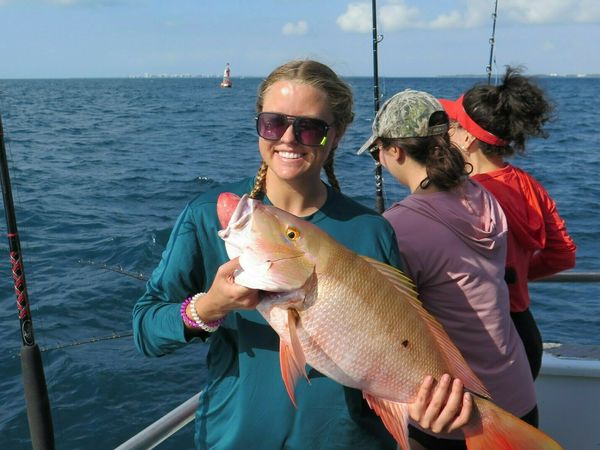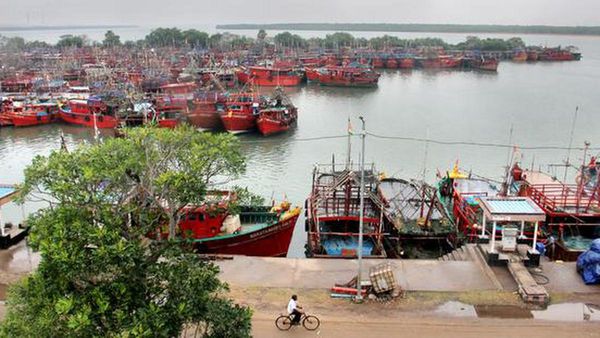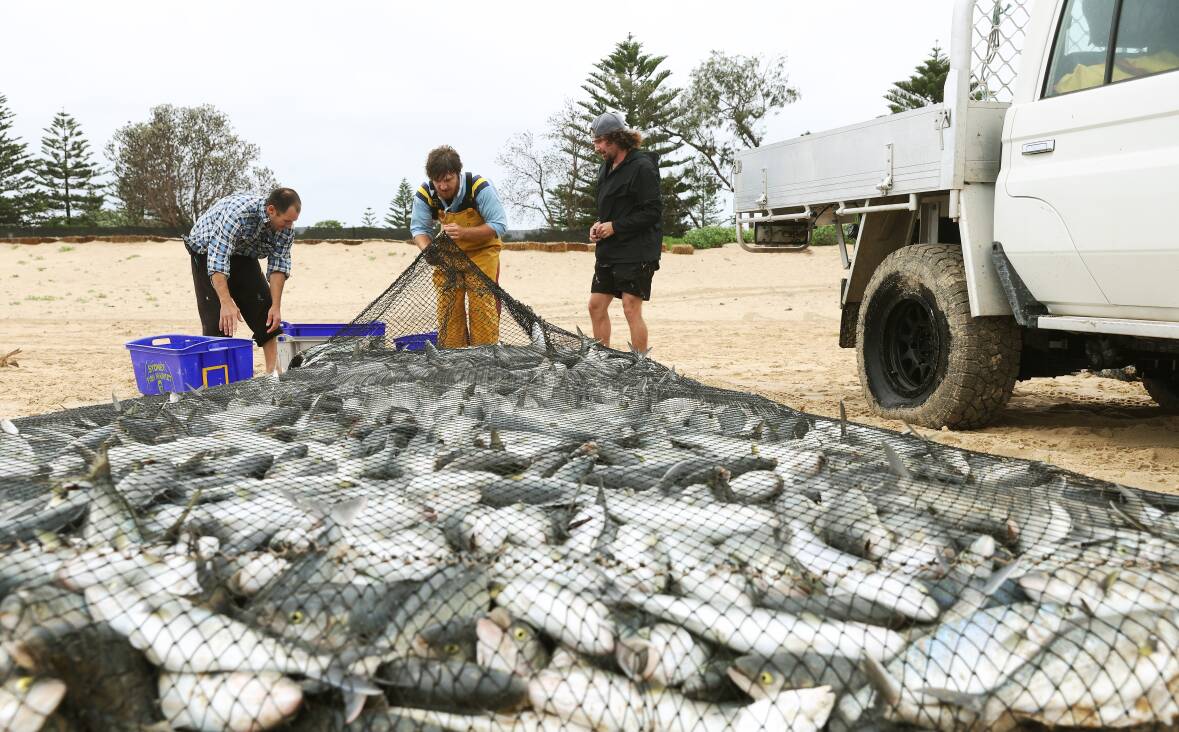
About 50 metres off Stockton's shoreline, an irregular, dark patch of water is moving gradually north. It's what Greg Tarrant has been looking for most of his life.
Mr Tarrant is the third generation of a family of commercial fishers. He has been chasing mullet for more than 41 years as they come out of the estuaries along the east coast and into the sea to spawn in an annual migration.
Mr Tarrant's father and grandfather were mullet men; his father still fishes with him, and his brother, two nephews, and his adult son Lee are part of his crew.
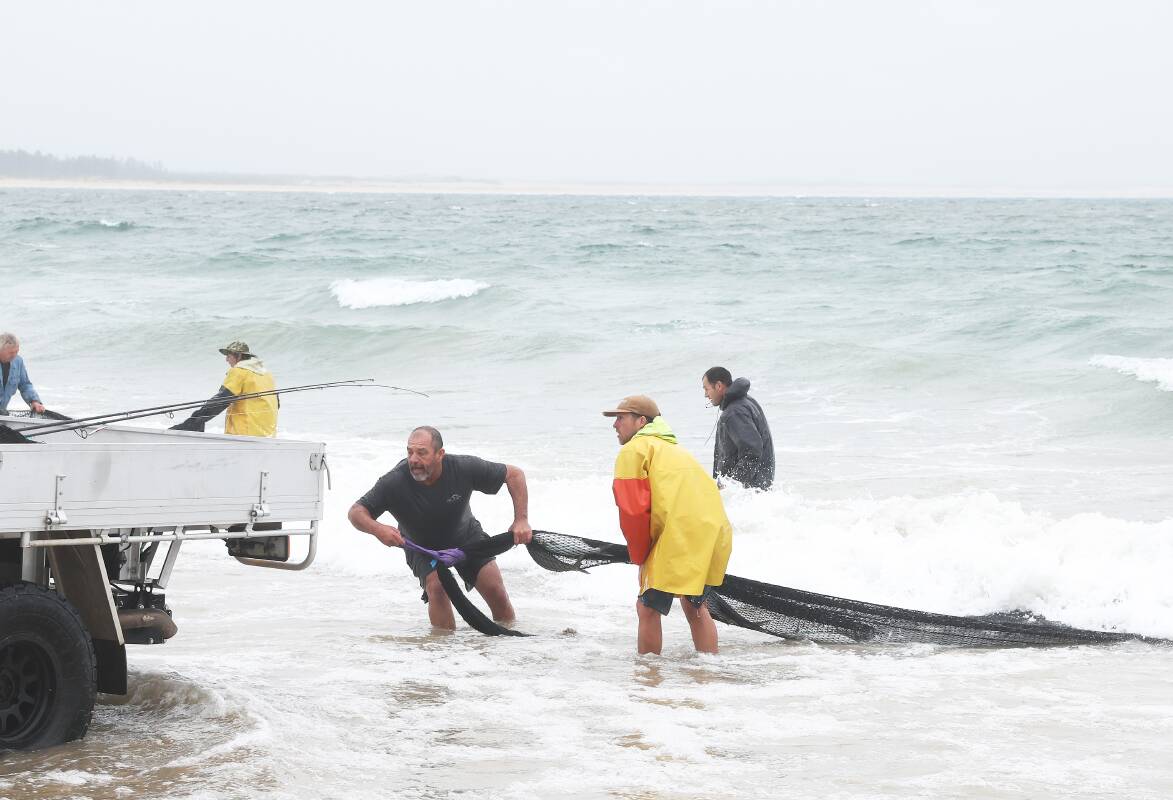
The mullet men wait on Stockton beach for about six weeks from April each year as giant schools of the fish make their way out of the estuary around the Stockton breakwall.
Earlier this month, Mr Tarrant and his crew spotted the characteristic dark patch of water just offshore. The boat was launched and the school of fish was surrounded and hauled in.
But instead of the target mullet, the nets were filled with around five tonnes of Australian salmon and a little over a tonne of tailor.
The moment the school was spotted would prove critical for what came next - and would raise a crucial question about the generational angler's craft and experience. Can a commercial fisher standing on Stockton beach be expected to identify the species of fish they're targeting from more than 50 metres away before they launch the boat?
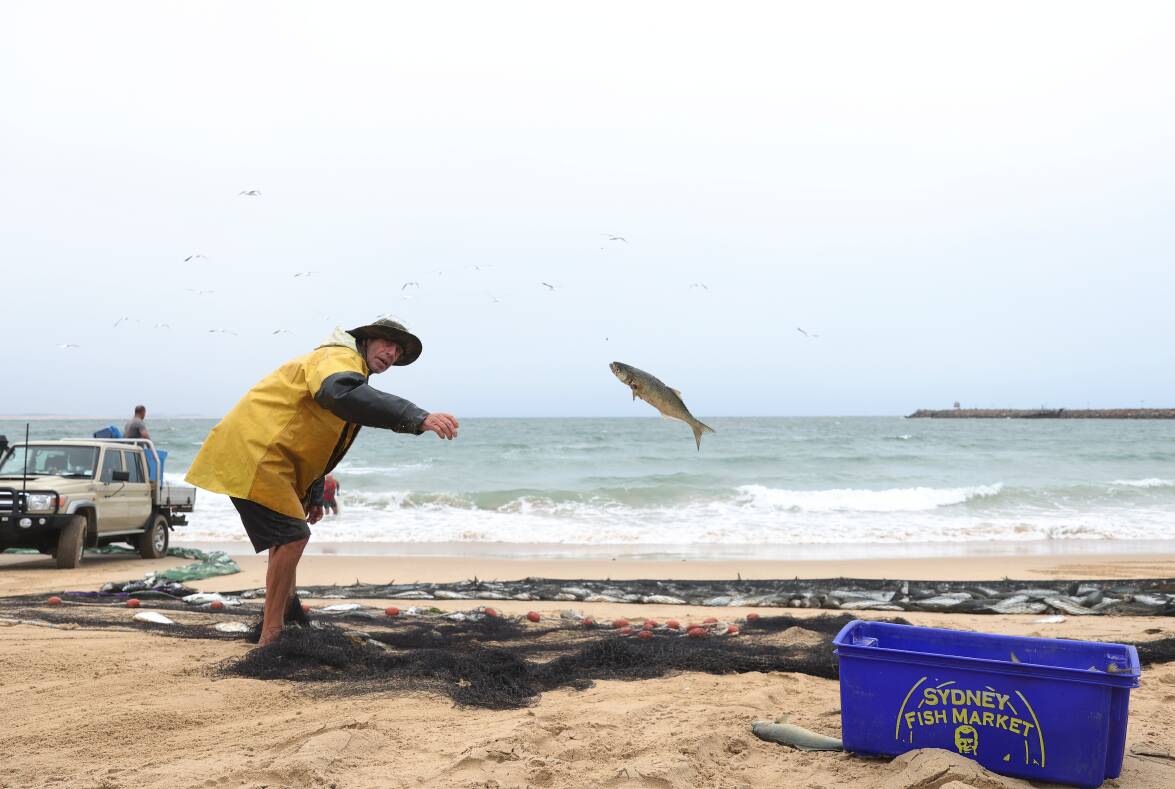
In September 2021, the NSW Department of Primary Industries enacted a commercial daily possession limit on tailor that allowed for a maximum of 100 kilograms of the fish in a bycatch (or non-targeted catch) during a day of fishing.
The DPI said ocean haul fishers and their crews were expected to identify their targets before shooting their nets and to "visually verify" that their catch mainly consisted of that target species before it is brought up onto the beach.
"If there is a circumstance that prevents a fisher from identifying the species, then the haul crew should check the species while there is an opportunity to release the catch alive from the codend before hauling the net onto the beach," a spokesperson for the department said.
"If the catch exceeds a legal limit, then steps must immediately be taken to return the fish to their natural environment with the least possible injury."
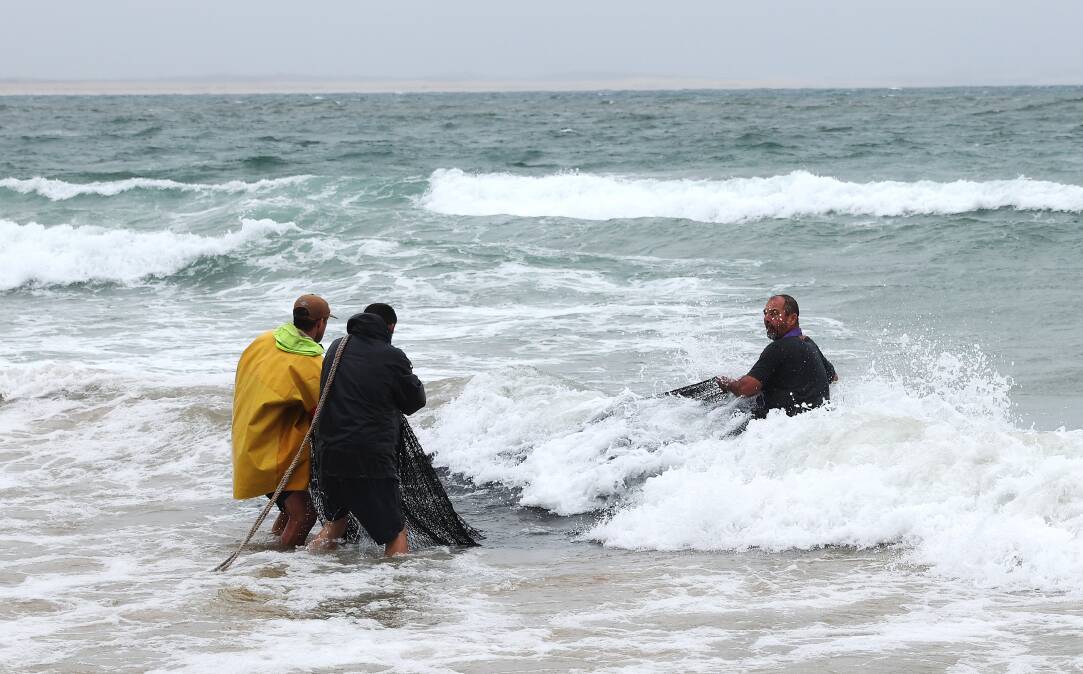
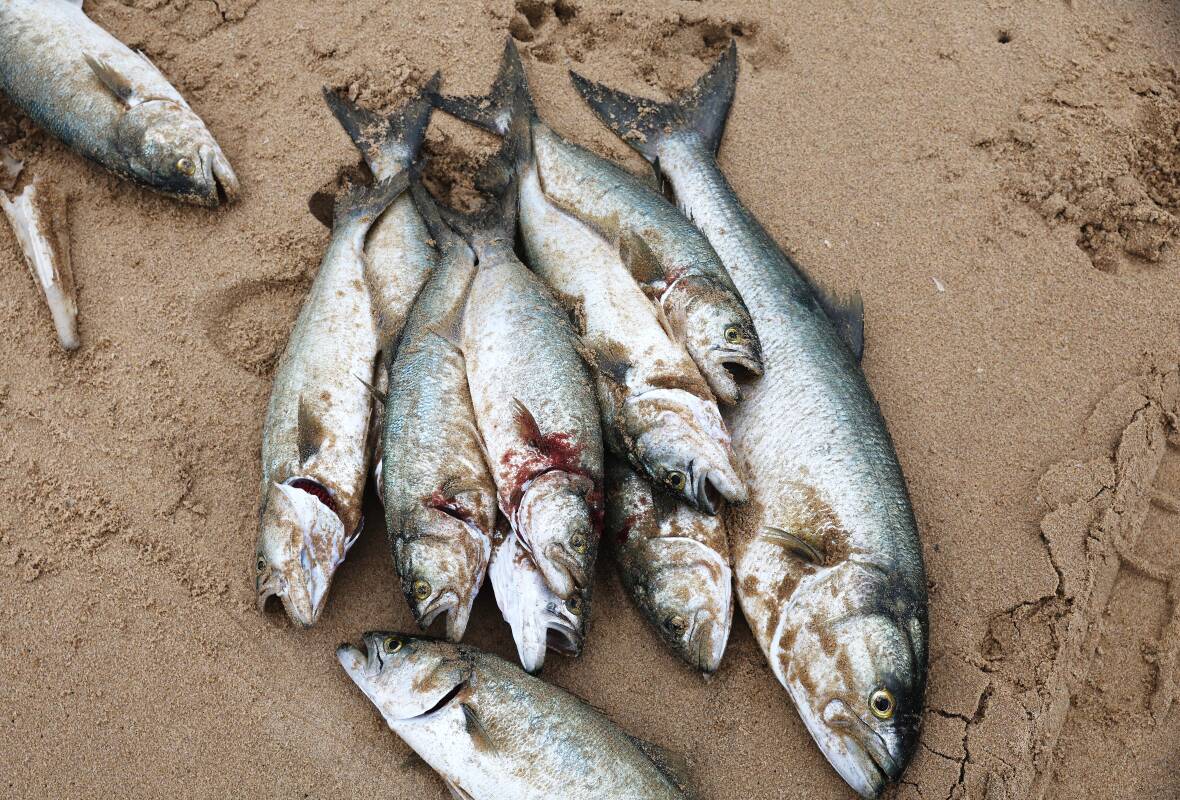
Netting a problem
Mr Tarrant said he did not target tailor. He said the fish tended to chew and damage nets when caught, often ended up "mashed" or tangled around the gills, and die in the catch.
To target tailor, a typical mullet fisherman could expect to spend several days after a catch out of action, mending nets, an angler on the government's commercial fishing advisory board, CommFish NSW, said.
"I don't want to shoot in tailor," the angler, who spoke anonymously, said. "You might catch those fish, but your net's destroyed. We don't have the gear for it."
When Mr Tarrant launched his boat on April 4, he said the school he shot at was behaving like his target fish.
"They have exactly the same characteristics," Mr Tarrant said. "They travel and migrate the same way. They were jumping like the mullet do."
When the haul was brought onto the sand, and Mr Tarrant realised what he had caught, he contacted the DPI and said a fisheries officer told him to release the excess tailor or leave them on the beach.
Many of the fish he had caught were mashed in the net and dead when they came ashore.
"[Fisheries officers] said to leave them on the beach," Mr Tarrant said. "But if I were to leave them on the beach, I would be the worst person in the world. We can't leave fish on the beach; it's a bad look for the industry."
Mr Tarrant ultimately took the haul to the Nelson Bay Fisherman's Co-Op, where he and his crew cleaned and graded the fish and prepared them to be shipped to market. Tailor is a popular table fish that last week was selling for almost $20 a kilogram (or about $21 a fish) at the Sydney market.
Soon after, he says, a DPI fisheries officer arrived and seized around a tonne of fish caught above the bag limit. Mr Tarrant escaped the potential fines for the illegal haul but said he was out of pocket for labour and the revenue he could have otherwise made on the catch.
A 'catch-22'
The department spokesperson said on Monday that fisheries officers "advised" Mr Tarrant to "follow the regulations and return any excess fish to the water with the least possible harm".
The seized fish were ultimately sold to the co-op, and the proceeds returned to the DPI, the spokesperson said, adding that the department was continuing its investigation into the incident.
Mr Tarrant argues the legislation is a catch-22. He says returning the fish to the water would ultimately lead to hundreds of kilograms of dead tailor washed up on the sand, putting him at the mercy of public disgust. Leaving the fish on the beach would mean the same outcome.
He and his crew were now struggling to reconcile how to navigate an impractical daily limit on one species of fish when other restricted bycatch species were regulated by an annual quota.
"We're here at Stockton beach now," he said on Friday. "We're looking at fish coming to us now, and we've got blokes here all saying, 'What do you think they are? They look like mullet.'
"They could be sitting there, but they've got us worried that we can't shoot. We don't want to get caught again."
Mr Tarrant doesn't take issue with bag limits on certain species but believes that a 12-month quota restriction as part of a total allowable catch, as with other species like eastern sea garfish and yellowtail scad, would be more practical than the daily limit.
Under such a system, he says, he could have spaced out his haul of tailor, which, over the week, would have been well under the restriction's threshold.
"We have to get on well with the inspectors; I don't have anything to hide," he said. "I'm straight to the point with them and a straight shooter.
"Over three days, we could have taken that 900 kilograms anyhow."
In ideal conditions, on a perfectly clear day under a light wind, a highly experienced angler might be able to identify the species in a school of fish offshore by sight, but it would be difficult and unreliable, the CommFish board representative said.
"We don't just fish in nice weather," the source said. "It's hard to tell, and the problem is that different fish swim together."
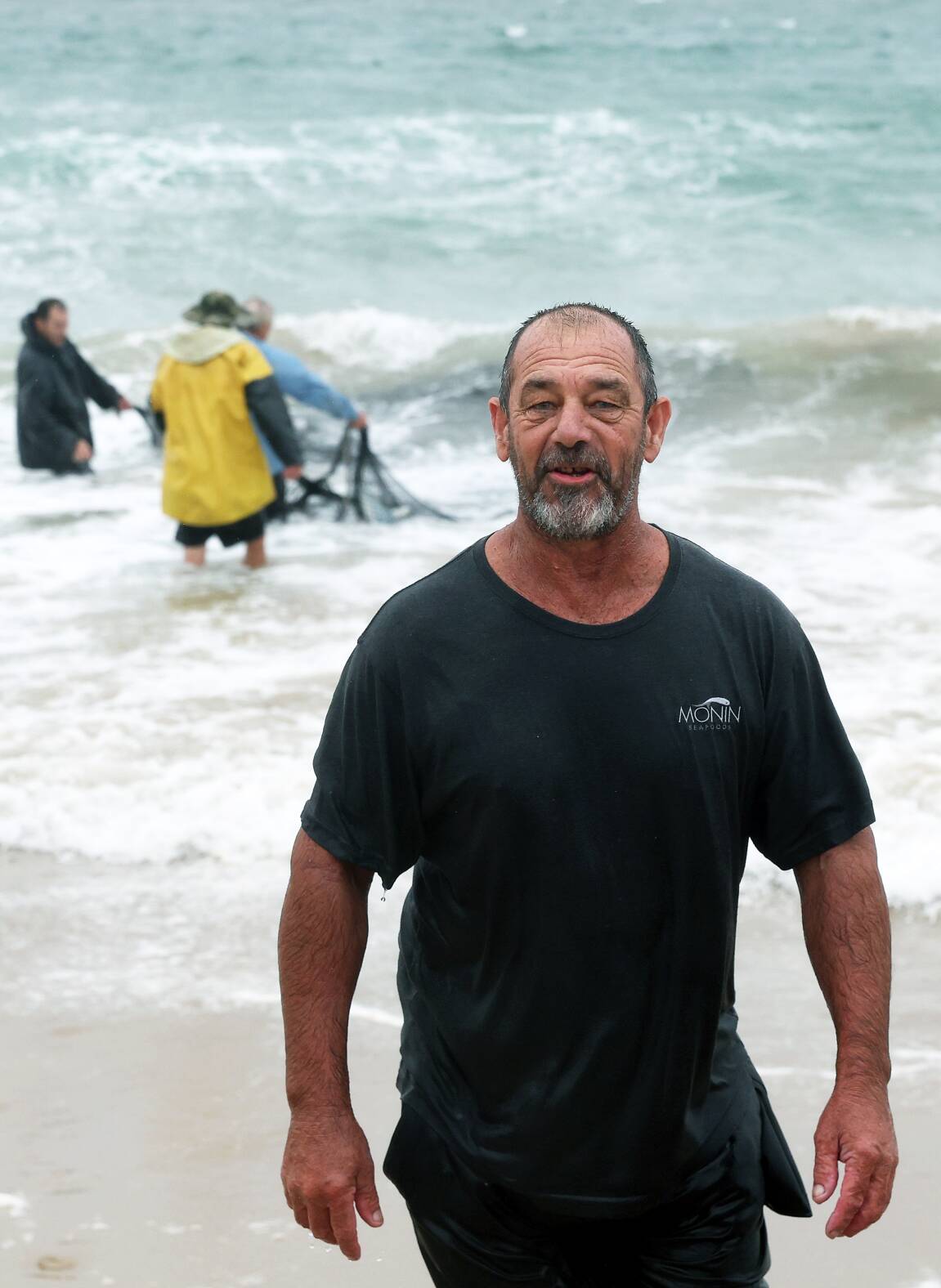
Twenty-five millimetres of rain fell over Newcastle on April 4 when Mr Tarrant took his bycatch of salmon and tailor.
"The fisheries officer said, 'Oh, you knew what you were shooting at'," Mr Tarrant said, "But there have been blokes doing this longer than I have, and every fisher on the coast would have at one time mistaken a patch of salmon for a patch of mullet."






